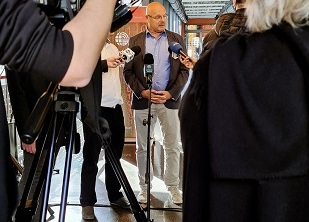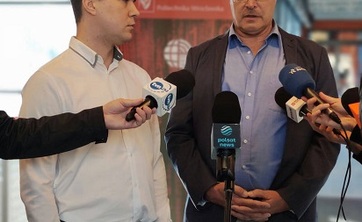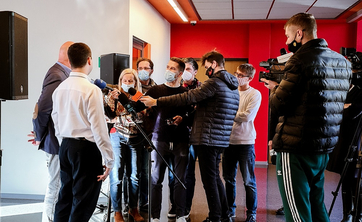The fourth wave of coronavirus infections will peak in December, and at that time the daily number of diagnosed cases may reach 40,000. Such forecasts were presented by Prof. Tyll Krüger from the Faculty of Computer Science and Telecommunications, founder of the MOCOS Group.
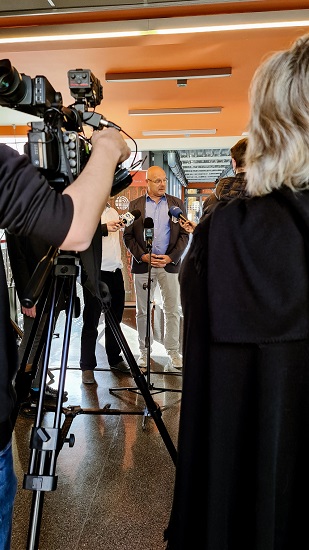 It's high time to think about some restrictions
It's high time to think about some restrictions
- We are currently observing a very strong increase in infections, but it must be remembered that the fourth wave started quite a long time ago, already in August. We had a small number of infections at the time, but then we also saw the first spike. We have another one in October. We are expecting the peak in mid-December, but what is most worrying, the demand for hospital beds will exceed 40,000. This is a huge problem - says Prof. Tyll Krüger from the Faculty of Information and Communication Technology.
In the presented scenario, not only the number of diagnosed cases will exceed 40,000 a day, but the number of deaths will amount to about 240 people a day. Although the projected number of deaths is lower than in previous waves, it is related to vaccinations, which significantly reduce the risk of deaths. In addition, there are several factors that may cause a change in the above-mentioned predictions, including the number of people to be tested daily.
- It should be noted that the presented scenario relates to a situation when no pandemic restrictions will be introduced. So it all depends on what actions are taken to stop the rising tide of infections. It is high time to think about introducing restrictions – emphasized Prof. Tyll Krüger.
According to the professor, the possible solutions include, among others, introducing a lockdown, restricting access to public activities only for vaccinated people, introducing distance learning in colleges and universities and testing all school children.
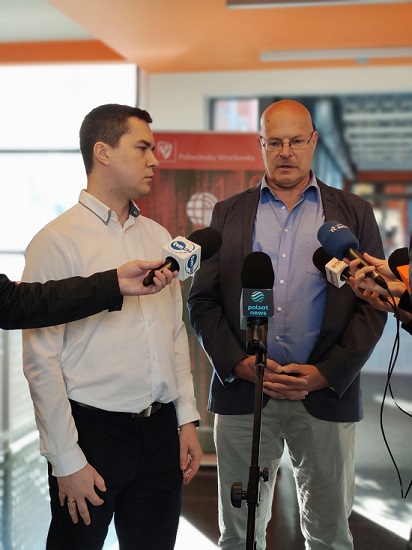 Hey, student, get vaccinated!
Hey, student, get vaccinated!
Prof. Tyll Krüger also pointed out that the largest number of deaths will be observed in the group of people aged 80+, which, if compared to other European countries, is characterized by a relatively low level of vaccination (about 70%). Another problem is the low number of vaccinated young people.
– I'd like to appeal mostly to students. Young people typically don't get badly sick, but they do have high levels of viral transmission. So I urge you to become vaccinated. Vaccination not only reduces the chance of getting sick, but can also reduce the development of the pandemic, although it will not stop the fourth wave, the scientist noted.
Due to the upcoming 1 November, the professor admitted that the chance of getting sick during outdoor activities, e.g. during a visit to a cemetery, is small. Still, the travels and family gatherings at home can be problematic, and hence in the current situation it is better to refrain from them.
Recently, the number of infections has also been increasing in Lower Silesia. Currently, the R coefficient, indicating the number of people infected by one sick person, is here 2, while the nationwide average is 1.8.
– In our region, one sick person infects two more. This is quite a problematic situation. We saw a significant increase last week. It does not have to be a constant trend, because it is greatly influenced by the level of vaccination in the region, which is here significantly higher than for example in the east of the country, says Marcin Bodych, member of the MOCOS group.
***
The MOCOS Group (MOdeling COronavirus Spread) in Wrocław is the initiator of an international research project named MOCOS International. The team deals with risk analysis, prepares forecasts for the next days and weeks, as well as recommendations on how to fight COVID-19.
The aim of the team is to support public institutions in bringing the epidemic to a state of extinction (subcritical), i.e. in reducing the scale of virus reproduction to a level that is irrelevant from the point of view of public safety.
The group was founded by Prof. Tyll Krüger from the Faculty of Information and Communication Technology, who deals with mathematical modelling in medicine and biology. The team consists of scientists from Wrocław University of Science and Technology, the University of Wrocław and the Medical University of Wrocław, as well as experts from Nokia Wrocław, EY GDS Poland and MicroscopeIT.
